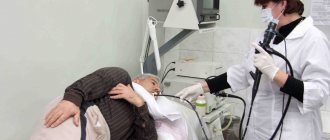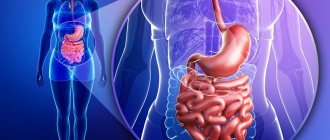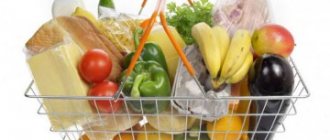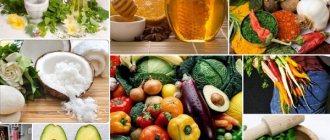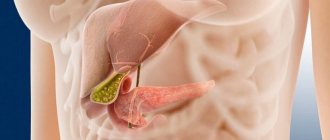The diet for infection in the intestines is aimed at completely restoring the balance of water and salt that was lost as a result of constant vomiting and diarrhea. These pathological phenomena cause serious dehydration, as well as the loss of a significant amount of nutrients and compounds necessary for the stable functioning of the body. Dietary nutrition makes it possible to quickly normalize the functioning of the gastrointestinal tract, while simultaneously stabilizing the functioning of other systems.
Important! Damage to this type of organism occurs as a result of ingestion of parasites such as salmonella, enterovirus, rotavirus, and dysentery. Elimination of their harmful activities requires mandatory adherence to proper restrictive nutrition.
Principles of therapeutic nutrition for intestinal infections
A balanced diet for pathological intestines is the key to a quick recovery. On the first day of exacerbation of the disease, gastroenterologists recommend completely refusing to eat. While maintaining bed rest, the patient is given moderately strong, sweet tea (2 teaspoons of sugar per 250 ml of water) at least 6-8 times a day. Tannins in black tea coat the intestinal mucous membranes, act as a natural antibiotic, relieve inflammation and irritation. In turn, glucose in sugar acts as a source of energy for a weakened body. In the future, the diet is organized according to the basic principles of therapeutic nutrition:
- Increased drinking regime. During the period of exacerbation of intestinal infection, it is necessary to ensure that the patient drinks at least 2 liters of fluid. Clean drinking water must be included in the diet.
- Ensure the necessary intake of nutrients into the patient’s body, especially proteins of animal origin. Lean meat, dietary fish, homemade calcined cottage cheese, eggs are a mandatory minimum for a quick recovery.
- Selection of easily digestible foods and healthy processing methods to maximally remove the load from the pathological intestine and eliminate chemical and mechanical irritation. All food is served pureed and boiled (in water, in a steam bath).
Treatment table No. 4 meets all the criteria for a healthy diet for intestinal infections. At first glance, the menu is monotonous and meager. But the products and recipes are selected in such a way as to provide the body with all the vital vitamins and minerals. Therefore, starting from the second day of the disease, the patient is transferred to a strict diet for 5-7 days.
Diet rules
In order for the patient to recover quickly, the following diet rules must be followed:
Dishes should be easily digestible, they should not irritate the mucous membrane of the intestines and stomach, or burden the pancreas.
Dishes can be boiled or steamed
Before serving, the products are ground or pureed.
The optimal food temperature is 33-36 °C.
The optimal portion is 150-300 g, depending on the age and weight of the patient, as well as on his state of health.
What can you eat if you have an intestinal infection?
After the first day of illness and the tea fasting day, the manifestations of intoxication significantly weaken. Nausea and vomiting stop, appetite appears. At this time, it is important that the sick person does not return to a traditional diet. The absence of symptoms does not mean recovery. The intestinal walls are still inflamed, peristalsis is impaired, and mucous discharge is present in the stool. If you refuse treatment, the acute disease will latently develop into a chronic form. That is, a person will regularly experience stool disorders (diarrhea, constipation), abdominal pain, increased gas production, heartburn, nausea, belching and other dyspeptic manifestations of the pathological process. Then a strict diet will become not just a course of treatment, but a forced way of life.
Table No. 4 is prescribed for a period of 5-7 days, which every adult can endure. The table shows the foods allowed and prohibited as part of the diet.
| Products | Can | It is forbidden |
| Bakery products | Rusks of day-old white bread (not browned, naturally dried). | Any other bread, including whole grain, rye, etc. |
| First meal | Soups and decoctions in light broths from chicken, veal, turkey with the addition of oatmeal, rice, eggs (flakes). | Rich soups, with fried vegetables, smoked meats. Vegetable liquid dishes with a large number of ingredients are also excluded. |
| Meat dishes | Pates, cutlets, meatballs of cleaned fillet of meat (chicken, veal, turkey), pre-cooked and ground. | Fatty meats and derivative products: sausages, frankfurters, balyki, etc. |
| Fish | Dietary fish varieties: carp, pike perch, pollock, hake, cod. The fillet is boiled or cooked in a steam bath. | Salmon, trout, herring, ivashi, mackerel, catfish and any other fatty fish. |
| Dairy products | Homemade cottage cheese (150 grams per day), with great care kefir and acidophilus. | Whole milk, curd desserts, yoghurts, sour cream, fermented baked milk, hard and soft cheeses. |
| Cereals, pasta | “Hercules” oatmeal, buckwheat, rice, maybe a little vermicelli as an additive to a viscous soup | Legumes, pasta in any form, except vermicelli, barley, wheat cereals |
| Eggs | Up to 2 pieces per day, including adding to dishes. Prepared soft-boiled or in the form of a protein omelet. | Quail, chicken, duck eggs exceeding the permitted limit. |
| Fresh vegetables | Zucchini for adding to soups, baked apples and pears without sugar. | All fresh vegetables (without heat treatment) are excluded. Apricots and plums are strictly prohibited. |
| Dessert | You can use blueberry, orange, or pear jelly. | Cakes, pastries, chocolate, candies and any other sweets. |
| Beverages | Black tea, rosehip decoction, jelly, compotes from dried apricots, prunes, dried apples, purified water (total amount of liquid - at least 2 liters per day). | Carbonated drinks, strong brewed tea, coffee, cocoa. |
| Fats | Butter 30 grams per day for adding to viscous porridges (no more than 5 grams per serving). Olive oil can be no more than 50 grams per day if the condition is complicated by constipation. | All fats of animal and vegetable origin, with the exception of the permitted amount. |
| Sauces | You can use white sauce: milk + flour, no more than 50 grams per day. | Ketchups, vegetable spicy sauces, mayonnaise, any dressings even from healthy food products. |
Definition of rotavirus infection
Rotavirus is a viral disease that occurs with symptoms of poisoning and acute respiratory infections in the initial stage. The infection is transmitted from person to person through the respiratory route or through waste products within 7-21 days from the onset of the disease.
A similar virus in an animal environment is not dangerous to humans. People of any age are susceptible to the disease, but in newborns it can be asymptomatic.
Rotavirus infection multiplies in the intestinal walls and leads to the death of immature cells and hairs of the intestine. Because of this, the absorption of beneficial and nutrient substances deteriorates, which leads to diarrhea in the first 12-24 hours from the onset of the disease. The temperature stays between 37.9 – 39 degrees, rarely rising higher. The condition is accompanied by vomiting and pain in the navel area on palpation.
In addition to the gastrointestinal tract disorder, at the initial stage there is redness of the throat, chills, runny nose, enlarged cervical lymph nodes and muscle pain, as in an acute respiratory disease. During the course of the disease, the condition may worsen on the 3rd day after visible improvement.
For rotavirus infection, no special drug treatment is needed other than to prevent dehydration and relieve symptoms. The body recovers completely on its own within 1-2 months.
Approximate one-day diet in the acute stage of the disease
The therapeutic diet, although it ensures the supply of all vital microelements, proteins and fats, is characterized by monotony and blandness. All dishes are prepared only in water or a steam bath. Baking, frying and even stewing are excluded. Salt is added minimally, and preferably completely excluded from the diet. However, you can lighten and even diversify the treatment table. Nutritionists offer several options for the daily menu and original recipes from permitted products.
In the first 2-3 days of illness, it is recommended to adhere to a strict regime:
- For the whole day: no more than 200 grams of white crackers from day-old bread, no more than 5 grams of salt, 40 grams of sugar and 30 grams of butter.
- Water: at least 2,000 ml, including jellies, teas and liquid dishes.
- Meal before lunch (at 8:30 and 11:00): viscous rice porridge (150 g), steamed cutlets (120 g), some crackers from the daily norm (50 g), black tea or blueberry jelly (250 ml).
- Lunch and afternoon snack (at 14:00 and 17:00): soup in meat broth with the addition of one egg (standard soup plate), boiled meat pate (120 g), rice porridge pureed in a blender or passed through a sieve (150 d), white crackers (50 g), blueberry jelly or black tea (250 ml).
- Dinner (at 19:00): steamed fish cutlets (cod, hake or pollock) (130 g), viscous rice porridge (150 g). Black tea or blueberry jelly (250 ml).
It is important to observe time intervals between meals so that the pathological intestine completely digests the incoming substances. You can eat every 2-3 hours or follow the diet recommended by doctors. The main thing is that the amount of food fits into the stated standards.
Nutrition depending on the disease
Intestinal infections can be caused by viruses and bacteria. Symptoms, and therefore treatment, may differ in each case.
The causative agent of the disease is Salmonella bacilli. These bacteria most often affect children. Salmonella can be found anywhere, for example in food. The stick can last up to four months in meat and sausages, and up to six months in frozen meat.
At the same time, the appearance and taste of the product most often remain unchanged. The disease manifests itself in the form of weakness, chills, fever, nausea, vomiting, and diarrhea. Every minute there is more and more bacterial infection in the body. In childhood, salmonellosis can be fatal.
The menu should include a sufficient amount of protein, while carbohydrates and fats are sharply limited. This type of nutrition lasts only a few days, so it is considered energetically deficient. With salmonellosis, it is important not only what set of products is used, but also how the dishes are prepared. It is better to bake, boil or steam food. After which the dish should be thoroughly chopped in a blender.
You will have to exclude the following foods from your diet:
- whole milk;
- fresh vegetables;
- some fruits: grapes, citrus fruits, pears;
- oatmeal, pearl barley and barley;
- sweets, baked goods;
- soda;
- spices, sauces, marinades;
- canned and smoked foods;
- semi-finished products and fast foods.
Organization of therapeutic nutrition for children
Diet No. 4 for young and older children has its own characteristics. Pediatricians do not recommend doing a fasting tea day for any symptoms of the disease. The child must be fed even in between frequent vomiting.
Nutrition adapts to the development of intestinal infection. If the disease is accompanied by diarrhea, the emphasis should be on viscous porridges made from buckwheat, rice, oatmeal or infant formula without milk. Such painful symptoms as nausea and vomiting are relieved with soups, jelly, and rosehip compotes. Stomach pain goes away after a full meal: soup, porridge with a steam cutlet and any permitted drink.
For infants, it is strictly not recommended to independently adjust the diet. The pediatrician will individually prescribe diet therapy for the mother if the child is breastfed or select the optimal formula. Often, the doctor recommends refraining from breastfeeding in the first days of an exacerbation of the disease. At this time, you can transfer the child to medicinal mixtures if he is 6 months old.
As the condition stabilizes, a younger child can be offered dry bread (bagels) or unleavened biscuits so that the baby can more easily accept strict nutrition. On other days of illness, it is recommended to adhere to standard menu No. 4. The table allows you to easily organize meals for children, even at an early age. The dishes are all pureed or ground in a blender, the porridges are semi-liquid, the soups do not contain specific ingredients - the therapeutic dietary menu fully complies with the principles of healthy food.
Photo: Vovk Natalia / Shutterstock.com
To completely relieve an intestinal infection, doctors recommend adhering to a therapeutic diet for 4-6 weeks. Diet tables No. 4b, 4c and 3 are suitable for these purposes. By combining dishes, recipes and food processing methods, the menu can be made not just healthy, but also nutritious and tasty. Even the Spartan strict table No. 4 becomes quite varied within 3-4 days from the onset of the illness. The diet includes vegetable puree (pumpkin, potato, squash), oven-baked apples or pears, and natural berry fruit drinks. An intestinal infection can and should be treated without additional dietary discomfort. If you carefully study the topic and responsibly approach the search for recipes, then a strict diet may well be the first step towards a healthy lifestyle.
Recommendations after recovery
A month after your stool has normalized, gradually return to your normal diet. Keep a food diary in which you write down your daily menu and how you feel. After an infectious lesion of the intestine, in 25% of cases, enzyme deficiency, intolerance to dairy products, dysbacteriosis, and chronic enterocolitis develop. If, after recovery, abdominal pain and stool disorders periodically occur, consult a gastroenterologist.
In continuation of the topic, be sure to read:
- Intestinal infection: symptoms and treatment methods (diet, medications)
- Prolonged diarrhea (a week or more): causes, first aid and treatment
- Does meat rot in the intestines?
- Probiotics and prebiotics: definition and list of drugs
- Representatives of pathogenic intestinal microflora
- Escherichia coli: about the bacterium, its types, pathogenic and non-pathogenic strains
- Stomach and intestinal disorders during pregnancy: norm and pathology
- Klebsiella in the stool of a baby: symptoms, treatment and prognosis for the child
- Absorbents: names of drugs and their use to cleanse the body
- Dysentery: how is the disease manifested and treated?
Colon cleansing as disease prevention
Intestinal infections are a separate group of human diseases caused by pathogenic, opportunistic microorganisms, viruses and some types of protozoa.
These diseases occur equally often in both children and adults, and differ from each other in severity and specific course.
Treatment of such diseases is complex. Due to the fact that pathogens that provoke the appearance of intestinal infections attack the cavities of the gastrointestinal tract, and in some cases also affect other organs located in the abdominal region, prescribing a gentle diet is not a whim of doctors, but a serious necessity.
You can learn more about the causative agents of intestinal infections in this list. It lists the most common causes of such diseases.
The causative agents of intestinal infections are:
- pathogenic bacteria (salmonella, shigella, etc.);
- opportunistic bacteria (clostridium, protea, etc.);
- astroviruses, caliciviruses, adenomoviruses, rotoviruses, etc.;
- protozoan microorganisms (dysenteric amoebas, balantidia, etc.).
Every person can become infected with pathogens of intestinal infections, even those who follow the rules of hygiene and carefully monitor who they come into contact with and what foods they eat.
After infection occurs, an incubation period begins, lasting on average three to five days.
During this time, a person carrying an intestinal infection pathogen may not even be aware of its presence.
After the disease enters the acute stage, the following symptoms appear:
- severe headaches;
- pain localized in the lower abdomen and acute in nature;
- nausea, profuse vomiting that does not bring relief;
- diarrhea (often containing particles of undigested food or blood clots in the stool);
- dark urine;
- elevated temperature (up to forty degrees Celsius);
- refusal to eat;
- confusion;
- apathy, drowsiness.
People with strong immunity are immune to many pathogens of intestinal infections. If they do become infected with these infections, they tolerate the symptoms they provoke relatively easily.
Factors that increase the risk of severe intestinal infection:
- unbalanced diet;
- alcohol and nicotine abuse;
- severe dysbiosis caused by long-term use of antibiotics;
- chronic gastrointestinal diseases;
- failure to comply with hygiene rules.
Improper nutrition can not only weaken the body’s immunity, but also disrupt metabolic processes that regulate the balance of beneficial microflora in the human intestine.
To be healthy, you should eat right. If for some reason a person cannot obtain all the necessary vitamins, minerals and other useful substances from food, then he must take specialized dietary supplements that replenish the content of these components in the body.
What can and cannot be eaten if you have an intestinal infection? As mentioned above, the diet of a person with this disease should differ significantly from what he is used to eating.
The diet for the period of treatment and recovery of the body should be planned in such a way that it does not include potentially dangerous foods.
During the period of treatment of infections affecting the intestinal area, as well as during the period after their acute phase, you should remove from the menu all foods that can provoke bloating and also stimulate intestinal motility.
These include:
- sour berries and fruits (as well as juices and jams prepared on their basis);
- some types of vegetables (for example, cabbage, radishes, beets, etc.);
- legumes;
- oils of vegetable and animal origin;
- milk;
- cereals and oatmeal;
- fatty meats, fish, poultry and offal;
- sweet foods and sugar;
- pastries and bread.
The diet prescribed to a patient with an intestinal infection should include the following types of products:
- low-fat cottage cheese and fermented milk products;
- low-fat beef, turkey, some types of fish;
- boiled chicken eggs;
- buckwheat and rice porridges cooked in water;
- vegetarian soups and soups made with lean meat;
- fruits and vegetables (except prohibited ones).
To normalize the functioning of the gastrointestinal tract organs damaged by infection, adults should avoid drinking alcohol, nicotine, and certain types of medications.
Of course, medications that are vital for the patient should not be discontinued.
You can obtain detailed information about drug withdrawal after consultation with your attending gastroenterologist or therapist.
You can restore the intestinal mucosa that has suffered from the harmful effects of viruses, pathogenic bacteria or protozoa using various traditional medicine, such as decoctions and infusions prepared from medicinal herbs.
For intestinal infections, it is recommended to use a decoction created using pharmaceutical chamomile, the collection of which can be purchased at any pharmacy.
To prepare a decoction, mix three tablespoons of dry chamomile with a liter of boiling water and let this liquid brew.
Such decoctions can be prepared not only with chamomile, but also with peppermint, rose hips or oregano.
After reading this article, you were able to find out why a diet for intestinal infections is a necessary measure that must be followed.
The nutrition described in the article will allow you to strengthen your body, restore your immune system, and quickly get rid of an unpleasant and serious illness caused by an intestinal infection.
With intestinal diseases, frequent bowel movements are observed.
Since the functions of the small and large intestines differ from each other (the small intestine is responsible for the absorption of nutrients into the blood, the large intestine is responsible for the production of vitamins, the processing of fiber, the formation of feces and their timely excretion), the symptoms will differ depending on the location of the disease.
Symptoms of colon diseases:
- Pain syndrome. Pain is more often observed in the lateral abdomen, less often in the epigastric region or above the navel. The pain has a dull, arching nature, which subsides after bowel movements or the release of gases.
- The stool is frequent, has a strong odor, and can sometimes contain mucus, blood, or have stripes resembling swamp mud.
- Rumbling, bloating, accumulation of gases. These symptoms intensify in the afternoon and weaken towards night.
- If discomfort occurs due to infection, the body temperature rises, headaches and dizziness appear.
Signs of inflammatory and tumor diseases of the colon are serious metabolic disorders. As a result, the patient feels weakness, exhaustion, the functions of the genital organs are impaired, and incontinence of gases and feces.
- Pain in the navel area.
- Loose stools with a light color and a sour, unpleasant odor. Sometimes parts of undigested food are observed in the consistency of stool.
- Bloating, feeling of fullness.
- Temperature increase. Thermometer readings vary depending on the number of microbes and the degree of intoxication of the body.
With prolonged manifestations of such symptoms, pathologies of other organs and systems may develop (the skin becomes thin and dry, nails become brittle, joints become swollen and painful).
Diseases of the gastrointestinal tract occur due to poor nutrition.
Scientists have found that the occurrence of most diseases of the gastrointestinal tract is associated with regular violations of the diet.
Therefore, it is important to adhere to certain norms and rules of nutrition that will help restore the intestines to their previous functions.
When composing a diet for a sick person, it is important to be guided not only by generally accepted standards, but also to take into account the individual needs of the body. With the help of a properly selected diet, you can solve the following problems:
- bring bowel function back to normal;
- stimulate restoration processes in the mucous membranes of the intestines;
- eliminate intolerance to certain dishes;
- replenish the body with missing vitamins and minerals;
- eliminate metabolic disorders;
- normalize the composition of microflora.
We invite you to familiarize yourself with the Japanese salt-free diet for weight loss: menu for 7 and 13 days, recipes and results
For intestinal diseases, diet planning should be based on the following principles:
- nutrition should help treat the disease and prevent further complications;
- nutrition should take into account the individual characteristics of the patient (taste preferences,
- accompanying ailments, digestive features).
Nutrition for intestinal diseases must meet the following rules:
- food should be consumed in small portions 5-6 times a day;
- avoid eating dry food;
- try not to overeat;
- products should be balanced, rich in proteins, fats, carbohydrates and fiber;
- the diet needs to be varied, the body should not lack any elements;
- Products should only be steamed, baked or boiled.
When composing a diet for a person with a diseased intestine, it is important to take into account the effect of foods on intestinal motility. In this way, stool consistency and frequency of bowel movements can be normalized. According to these parameters, products are divided into 3 groups:
- Those that increase motor skills
- Foods that reduce motor skills
- Neutral products (do not affect motor skills)
If you have an intestinal disease, consuming dairy products is prohibited.
The daily menu for a sick intestine should not include those foods that cause rotting and fermentation and contribute to gas formation.
Legumes and coarse plant fiber should be excluded. Vegetable fats are also not recommended, as they interfere with the absorption of nutrients.
Spices have an irritating effect on the digestive tract. Products that are prohibited:
- Fatty meats and fish;
- Legumes;
- Dairy products;
- Nuts;
- Spices;
- Fried eggs;
- Very salty foods;
- Fried and smoked dishes;
- Canned food;
- Sweet dishes;
- Mushrooms;
- Coffee;
- Caviar;
- Alcoholic and carbonated drinks;
- Fast foods.
Grapefruit is a product that removes salts and toxins from the body.
Since ancient times, colon cleansing has been considered the best means of prevention for various diseases, not only those of the gastrointestinal tract.
Waste substances regularly remain in the intestines, which, normally, the intestine itself should remove.
Symptoms of the disease
Intestinal infection can be spread by airborne droplets, household and fecal-oral routes . This means that you can become infected in transport, a store or while walking on the street. Young children are more susceptible to the pathogen. Large groups of children in kindergartens, schools or children's camps are often infected. This is due to the good resistance of microbes to external influences. Pathogenic bacilli die under strong heat or under the influence of disinfectants.
The symptoms of the disease are specific and difficult to confuse with something else. The following disorders are observed:
- Nausea and uncontrollable vomiting. When the stomach is completely empty, vomiting of gastric juice begins.
- After a couple of hours, bowel dysfunction begins . The stools are watery, with particles of mucus and blood, and have a very foul odor.
- The patient's temperature can reach high levels.
- The skin takes on a bluish tint, which indicates dehydration.
- In the abdominal area there are paroxysmal cutting pains.
In some cases, in young children and adults, similar symptoms can be caused by inflamed appendicitis, so the patient must be examined by a doctor to rule out a dangerous pathology.
What products are prohibited
All fried, salty, spicy foods, any smoked foods, sausages and preserves should be excluded from the child’s menu. Among vegetables and fruits, in case of intestinal infection, it is forbidden to eat fresh greens, all legumes, fresh fruits and vegetables - beets, carrots, cucumbers, tomatoes. It is worth giving up mushrooms and nuts. You should avoid sour berries and fruits.
As for flour products, you should not give fresh bread, as well as bread made from rye flour, all baked goods, cakes and pastries. Sweets should be sharply limited: exclude sweets, chocolate, sweet cookies. And you should also not offer your child packaged juices from the store or coffee. Fatty meat and strong meat broth are not the best option for a diet with an intestinal infection. As for dairy products, you should absolutely not consume milk and kefir.
Principles of nutrition
Dr. Komarovsky believes that for any intestinal disorder, a therapeutic diet is the most important condition for the baby’s rapid recovery. During an acute period of intestinal disorder, the diet should include food at a temperature that is comfortable for digestion. It must be crushed.
See the video below for more details.
The main principles of a therapeutic diet for an infectious intestinal disorder:
- Following a diet for a month. The first week is aimed at restoring the volume of fluid lost by the body. The goal of the diet for 2-3 weeks is to introduce the necessary electrolytes, vitamins and microelements into the body. Their level drops catastrophically after profuse vomiting and diarrhea. From the fourth week they switch to the full usual table, consolidating the effect obtained from the treatment.
- You definitely need to stop the vomiting. If the baby’s body continues to lose water through vomiting or diarrhea, it is useless to feed the baby. In such cases, antiemetic drugs are needed, which are prescribed by the pediatrician. It is important to remember that all medications have side effects.
- You should eat in small portions, but often enough. This will not increase vomiting or loose stools. It is better to feed the baby at the same time, strictly according to the clock.
- Fasting with an intestinal disorder is unacceptable! On the first day, children should reduce all portions by exactly half. Hunger will only weaken the child’s body, which at this time so needs an adequate supply of vital nutrients and energy.
- It is better to give preference to food that is sufficiently chopped. Mashed potatoes or carrots work well. If your child loves broccoli or cauliflower, you can safely add them to the menu. The meat should also be minced. Scroll it several times through a meat grinder with a medium-sized grid. You can also grind everything in a blender. This will be an excellent base for making meatballs or meatballs.
- The basis of nutrition should be protein foods. During an acute period of intestinal infection, it is better to give preference to meat products that are quickly absorbed and digested. It can be stewed quenelles with mashed rice as a side dish or a light soup with chicken meatballs.
- Cook in a steamer or slow cooker. It is allowed to use the oven baking method. Anything fried or grilled is not a good choice. They can damage the inflamed intestinal wall, making diarrhea worse.
- Observe the temperature conditions for serving food. Cooked food should be cooled to 40-45 degrees. Heavily chilled or cold drinks should also be avoided. They significantly activate the passage of food through the intestines, thereby increasing diarrhea.
Rules for preparing a drink for adults
When choosing fruits or berries for preparing a healing remedy, it is important to take into account that fruits with a fixing effect will help get rid of diarrhea. They must be of high quality, without signs of deterioration, and if possible, you must ensure that they are environmentally friendly.
Using simple jelly recipes to treat diarrhea, you can achieve a significant improvement in the condition.
Rice drink
Soak 50 g of washed rice in cool water overnight. In the morning, bring the volume of water to 1.5 liters, cook on low heat for an hour. Stir the rice while cooking. After the cereal has boiled, grind it using a blender, adding 50 g of sugar and a little salt. Then the rice jelly needs to be boiled again.
Quince drink
Cut two quinces into slices, pour a liter of boiling water, cook for up to half an hour. Rub the boiled fruits, combine with quince decoction, add 100 g of sugar, a pinch of citric acid. Make a “chatter” from starch (a tablespoon) and cool water, pour into the drink, and bring to a boil.
Oat drink
Take the same volume of oatmeal and warm boiled water, mix, add a little yeast or a piece of black bread for sourdough. Leave in a warm place for 12 hours, strain, boil, cool. An exceptionally healthy oat drink is ready to use.
Blueberry drink
In two liters of water for 15 minutes over low heat you need to cook 200 g of berries with the addition of a glass of sugar. To prepare blueberry jelly, you will need to dilute 4 tablespoons of starch in cool water. The solution is poured into the drink, wait until it boils, turn it off and cool. Apple jelly is prepared in the same way.

